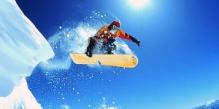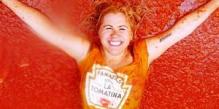Tigers' hypo-oxygenation 'not harmful'
Australia's peak body for sports doctors and related professionals says it sees no harm in the practise of "hypo-oxygenation", with NRL players taking to the training track in breathing apparatus.
Sports Medicine Australia (SMA) spokesman Dr Peter Nathan says the technique allowed athletes - in this case Wests Tigers players - to gain the benefits of a high-altitude training session without going to the mountains.
The body's cardiovascular system adapts to make more efficient use of oxygen in response to a supply of thinner air, and Dr Nathan says this was known to give athletes a "boost".
"What it will do, if done correctly, is to stimulate the production of more red blood cells, so that your oxygen-carrying capacity goes up," says Perth-based Dr Nathan.
"(The body) normalises with less oxygen in the air and ... once you go down out of altitude, or suck in normal air again, you get a boost."
Three players - Keith Galloway, skipper Robbie Farah and veteran prop John Skandalis were photographed using breathing aids at training on Tuesday.
Dr Nathan, who is a match day doctor in rugby union's Super 14 competition, says while the technique did not promote muscle healing it could benefit players who were recovering from injury.
They could use it to undertake a low intensity workout that would be "pushing their heart and lungs without pushing their legs", he says.
Dr Nathan says at least one AFL club had also used the technique, and there are questions over its role in sport.
The practice is reportedly viewed as ethically wrong by the World Anti-Doping Agency which has it under review and could ban it next year.
Under the world anti-doping code, "the method of artificially enhancing the uptake, transport or delivery of oxygen is banned."
An NRL spokesman told Fairfax the technique involved diluting the amount of oxygen, which he believed was not covered by the rules.
He said world anti-doping rules applied to increasing oxygen, not decreasing it, although he indicated there could be changes next year.
Dr Nathan says SMA, the peak body taking in sports doctors but also physiotherapists and other related professionals, was keeping an open mind for now.
"Sports Medicine Australia is very much concerned about these kinds of training techniques and if we feel they are injurious to athletes' health, or dangerous, then we are against them," Dr Nathan says.
"This doesn't look like it is damaging the athlete's health, and it is not currently illegal, so we don't have a strong view about it.
"But we reserve our opinion because ASADA (Australian Sports Anti Doping Agency) has said it is not too keen on it."
 © 2025 AAP
© 2025 AAP















Post a comment about this article
Please sign in to leave a comment.
Becoming a member is free and easy, sign up here.